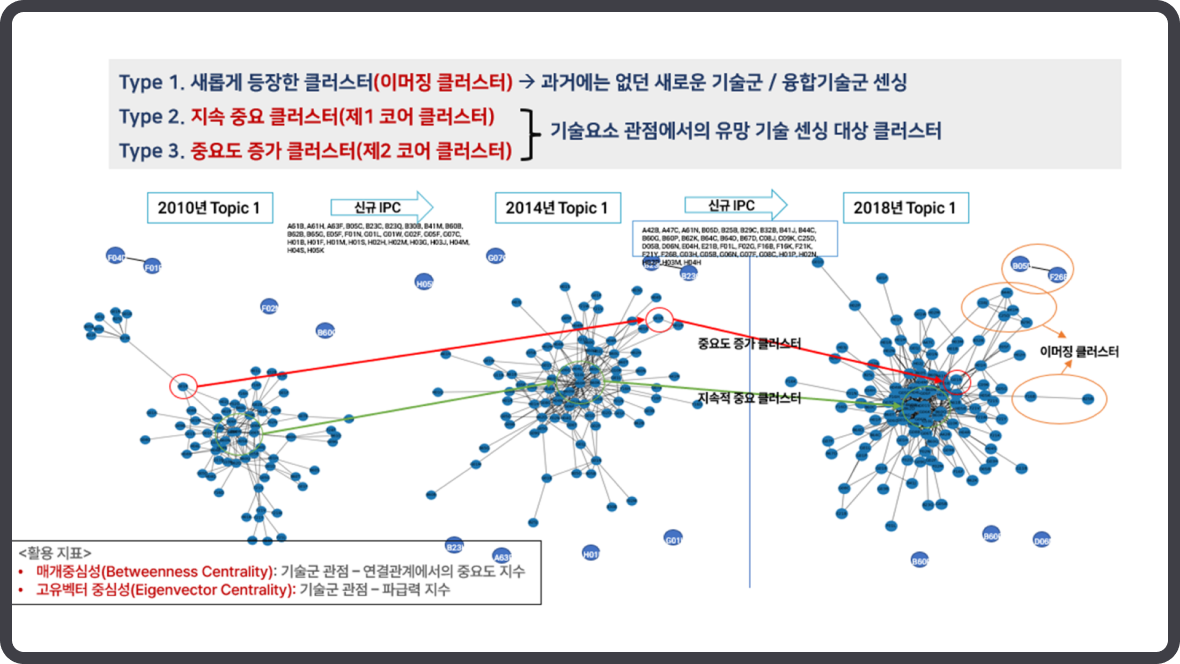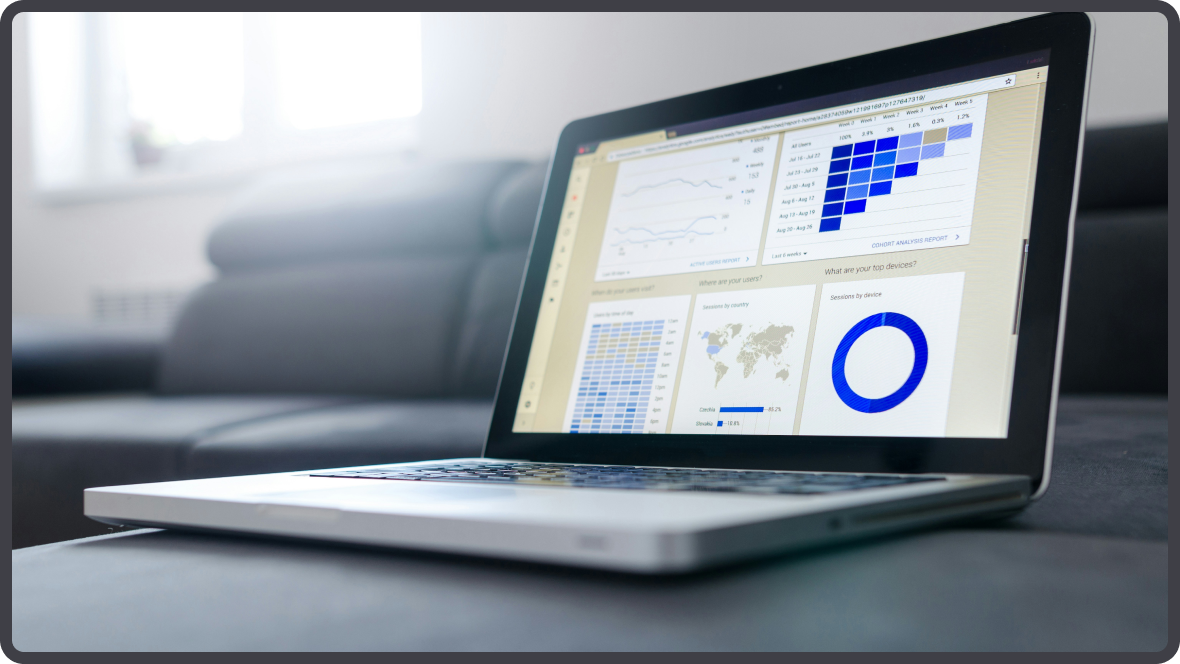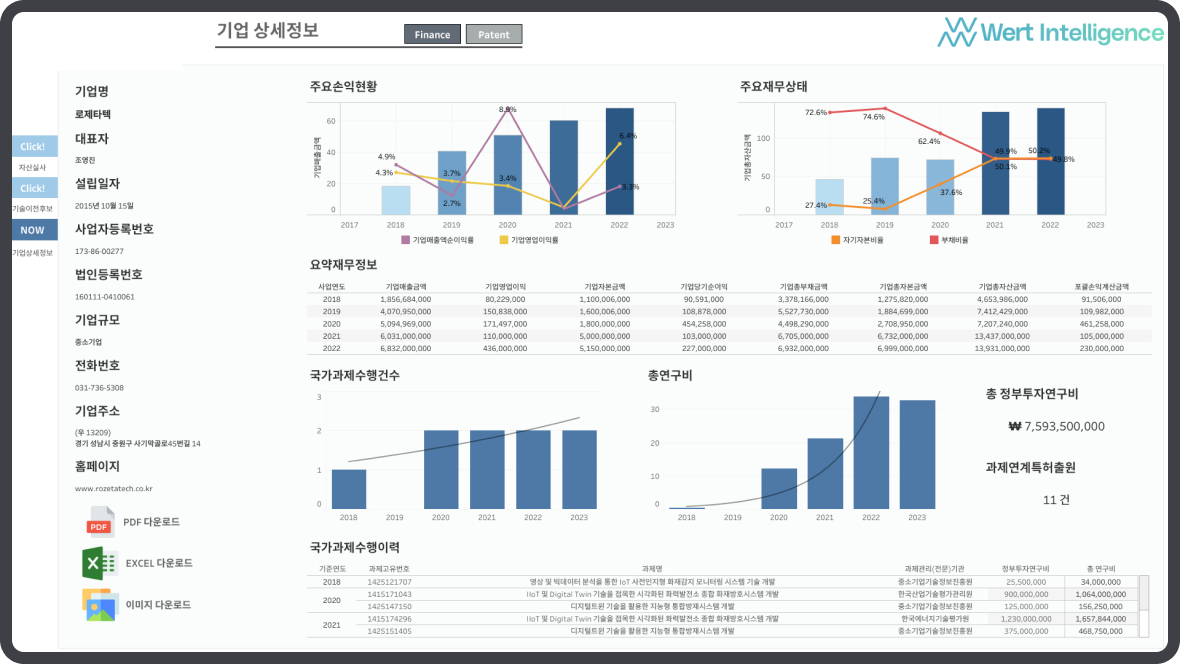- Home
- Services
- IP Data Intelligence
- IP Bigdata Analysis
IP Bigdata Analysis
A brand new patent analysis that had never existed.
IP bigdata analysis at a whole other level from the existing patent analysis will make a great shift to your business growth curve.
IP bigdata analysis, first introduced by Wert Intelligence in the IP industry, is an analysis service proven by the best companies in Korea.
Overwhelming IP big data analysis at a whole other level
Experience the depth and accuracy of our analytics, backed up by numbers.
No.1
Analytics trusted by Korea's top companies
Major domestic companies, universities, and national research institutions are deriving insights through Wert Intelligence's IP bigdata analysis.
1B+
Hold unique patent big data analysis infrastructure
We are equipped with unrivaled infrastructure for patent analysis with Korea's largest patent data coverage, the industry's best workforce, and the ability to process over 1 billion data simultaneously.
1,000+
Overwhelming IP big data analysis strategies
Through over 1,000 patent bigdata analysis strategies, we provide insights and business strategies optimized for corporate business.
IP Bigdata Analysis, what's the difference?
Discover insights that cannot be fully analyzed or realized with general patent analysis or patent map.
Data processing
Analysis process
Analysis results
General patent analysis
Limited amount of data analysis
Analysts perform thousands of manual analyses on average, at a fixed cost and time.
Worker-dependent analysis
Subjective technology classification and filtering dependent on the analyst's background knowledge.
Lack of consistent reproducibility
Even the same worker may produce different result analyses at each analysis time.
Patent Big Data Analysis
Overwhelming amount of data analysis
Based on 80TF-class high-performance data analysis infrastructure, it enables analysis of more than 1 million cases that analysts cannot access.
Objective data-oriented analysis
Objective technology classification and filtering through the bigdata analysis techniques utilized in other domains
Ensure consistent reproducibility
When applying the identical analysis process produces identical analysis results, allowing reliable conclusions to be drawn.
It closely analyzes with advanced technology.
IP bigdata analysis is carried out with a systemized step-by-step process to produce trustworthy and reliable results.
Expert customized consulting
Design a data analysis roadmap
Prepare data
Data refinement and processing
Big data analysis
Derive Insights
Limitless analysis results
IP bigdata analytics is provided without limits, customized to customers' needs, from decision support to business and technology strategies that companies want.
Proven analytics for market-leading companies
Don't fall for only nominal 'bigdata' analytics.
The answer is Wert Intelligence's IP Bigdata Analysis, the only solution selected by major companies in Korea.
The answer is Wert Intelligence's IP Bigdata Analysis, the only solution selected by major companies in Korea.
Company H
Deriving promising new technologies based on IP bigdata
Through quantifiable IP big data analysis, H was able to predict mid-to-long-term promising technologies by consistently discovering promising new technological subjects based on objective evidence and utilizing them as an important basis for the CEO's decision-making.

Company D
Discovering new industry candidates based on core technology
In order for a company with core technologies in specific fields to enter the homogeneous and heterogeneous product fields, it suggested new business candidate areas from various perspectives based on the correlation and cluster of patent data, and additionally presented the key companies and business status of the candidate areas.

K Research Institute
Bigdata analysis in the intense research area on disease A
By comparing and analyzing the intense research on disease A by year in Korea and the USA through core component and network analysis, K derived level differences among global companies and technologies currently under intense research and utilized them to set R&D research roadmap.

E University
Discovering companies in demand based on patents in IT sector
By comparing and analyzing patents in the IT sector and domestic patent parent population from the perspective of literature similarity, the university was able to discover candidate companies to transfer or commercialize university-owned technologies and verify the possibility of genuine demand based on corporate information, financial information, and R&D information.

Company L
Technology classification in the secondary cell battery field
L was able to objectively classify technology by clustering the corporate-owned patents, using unsupervised learning - the LDA technique - based on topic similarity of patent data rather than the classification method proposed by researchers.

Company S
Discovering licensing candidates for A technology
S was able to establish a network(interconnection relationship) based on citation information of patents for technology A, and objectively derive licensing or purchasing candidate patents through data analysis considering the importance of patents.

Take initiative in business competition with strategic decision-making through IP Bigdata Analysis.
Identify customer needs
Identify customer needs
Experts analyze customers' business goals and problems to provide customized consulting considering the characteristics of each industry and task.
Initial consultation and defining analysis objectives
Conduct initial consultation to set analysis objectives and have in-depth discussions on the company's future strategic direction and IP utilization plans
Design a data analysis roadmap
Plan the scope of analysis
Define the scope of IP data to be analyzed based on the customer's goals and needs
Refine the analysis scope by country, technology, or competitor
Set up the analysis model
Select the optimal model among various analysis models, including IP portfolio management, market prediction, and technology trend analysis
Models customized to specific technical fields or industries can be applied
Process design
Define the time, resources, and technical requirements for each analysis status in detail
Set step-by-step goals for data processing and analysis
Prepare data
Build a dataset
It builds a high-quality dataset that meets customer's goals and create a wide range of dataset based on global patent data
Set time/technology scope
Set the time according to the analysis period and major technical fields, considering analyzing trends of past, present, and future according to the stage of technological development
Set country and language of application
Provides multinational and multilingual data analysis by enabling the setting of application country and language of the patent data to be analyzed
Data refinement and processing
Data cleaning
Remove inappropriate data that does not fall within the scope of analysis and refine and process the data into an optimal form for analysis.
Data conversion/filtering
Extract the meaning of data through text mining and NLP and then carry out technical transformation, including language conversion and statistical weighting.
Big data analysis
Customized analysis with over 1,000 analysis strategies
Carry out analysis tailored to customer needs based on over 1,000 big data analysis strategies using big data analysis techniques such as time series analysis, correlation analysis, and predictive modeling.
Derive Insights
Derive insights optimized for your business strategy
Based on the results of the analysis, the optimized insights are derived, including technology strategy, discovery of new technologies with future growth potential, identification of potential risk factors, and market entry strategies
Propose measures to strengthen competitiveness
Propose strategies to secure a technological competitive edge over competitors
optimize IP portfolio, and suggest practicable measures to strengthen market competitiveness
Data based decision support
Support data required for a company to make a strategic decision
suggest a practicable roadmap for future strategies based on advanced analysis and insights